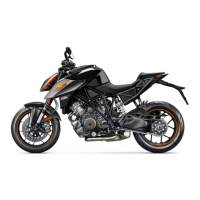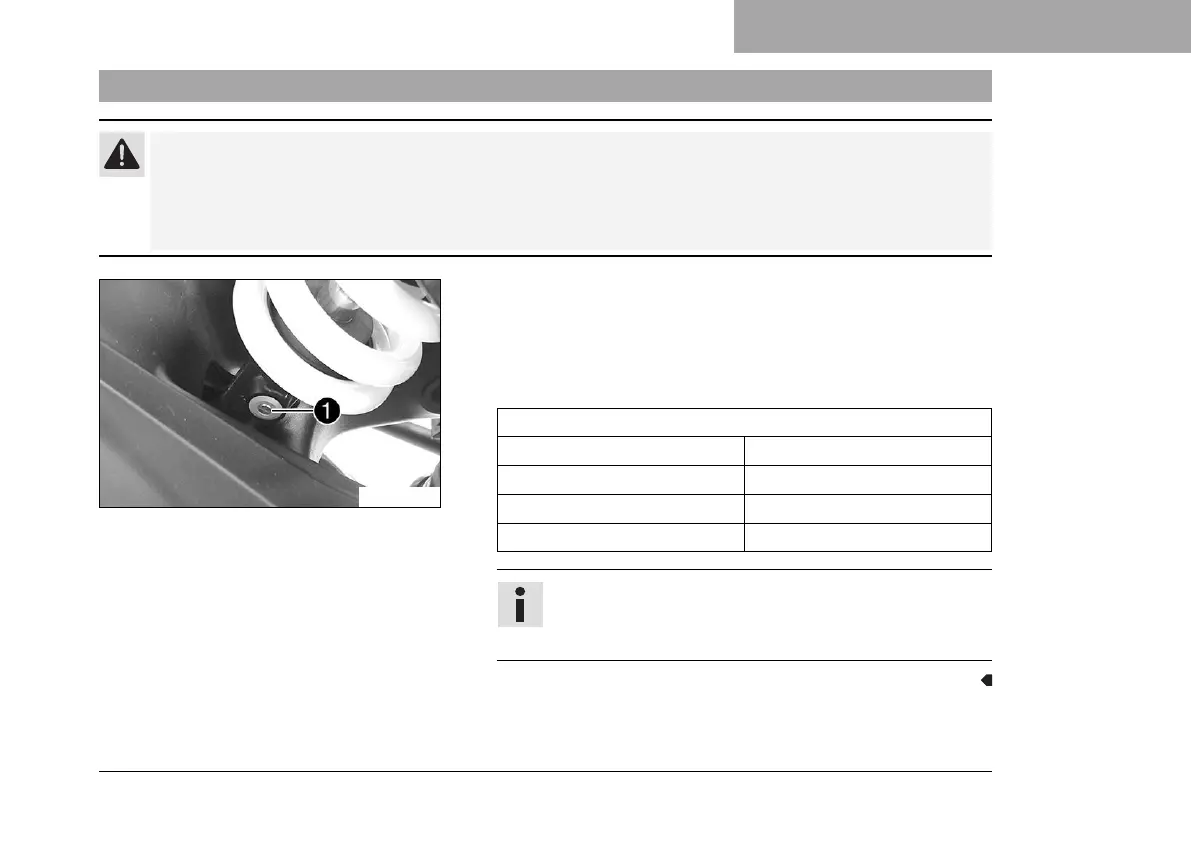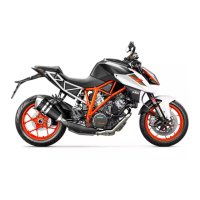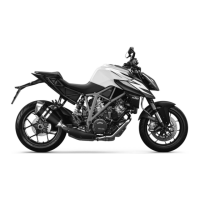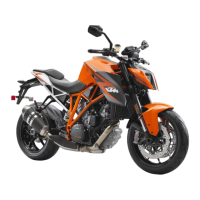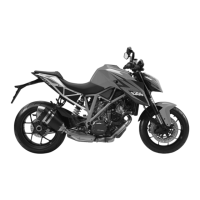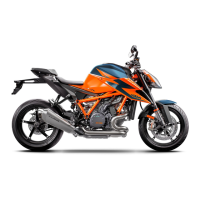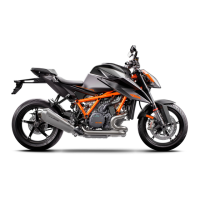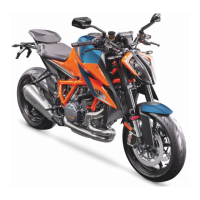SUSPENSION SETTING 12
151
12.7 Adjusting the rebound damping of the shock absorber
Caution
Risk of injury Parts of the shock absorber will move around if the shock absorber is detached incorrectly.
The shock absorber is filled with highly compressed nitrogen.
– Please follow the description provided. (Your authorized KTM workshop will be glad to help.)
E00698-10
–
Turn adjusting screw
1
clockwise up to the last perceptible
click.
– Turn counterclockwise by the number of clicks corresponding
to the shock absorber type.
Guideline
Rebound damping
Comfort 15 clicks
Standard 12 clicks
Sport 10 clicks
Full payload 10 clicks
Info
Turn clockwise to increase damping; turn counterclock-
wise to reduce damping.
